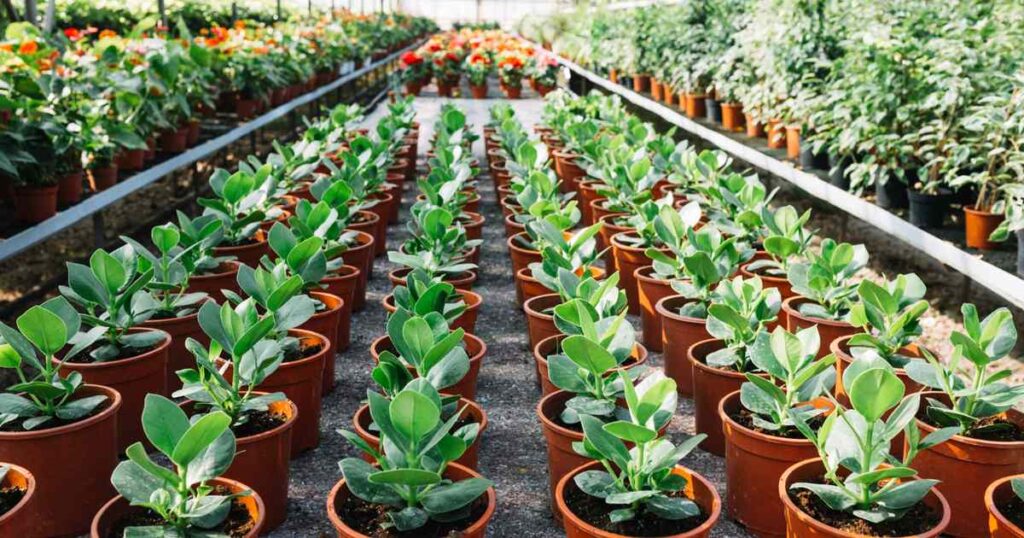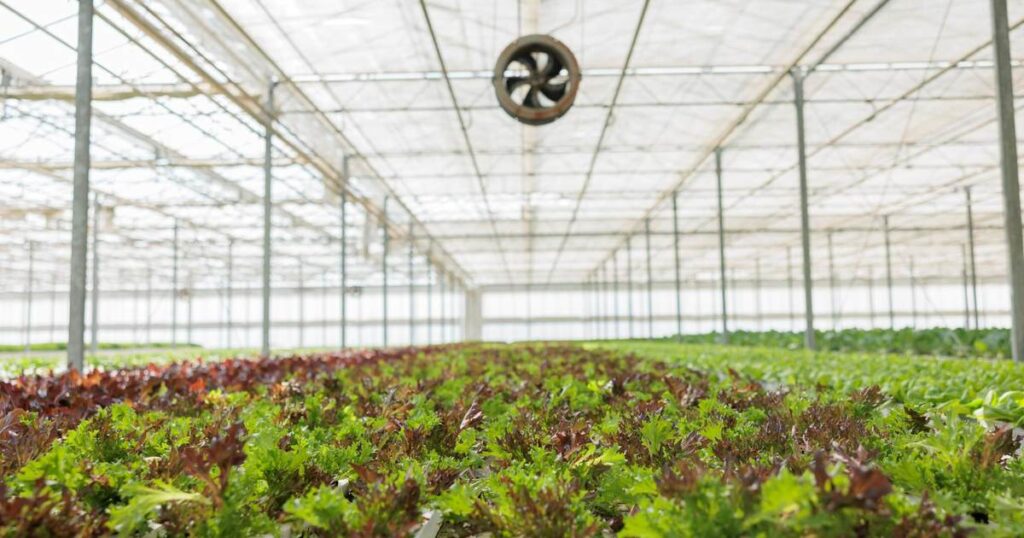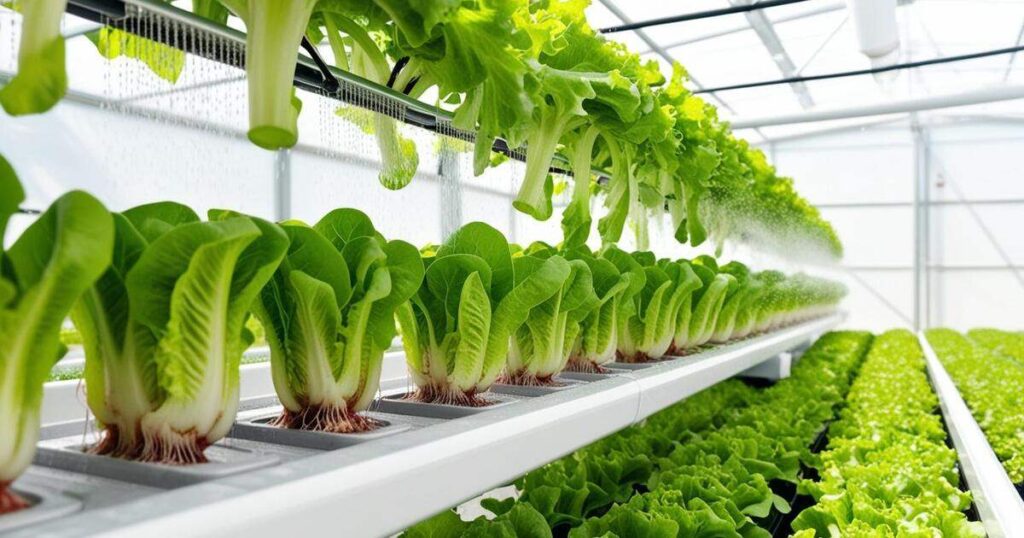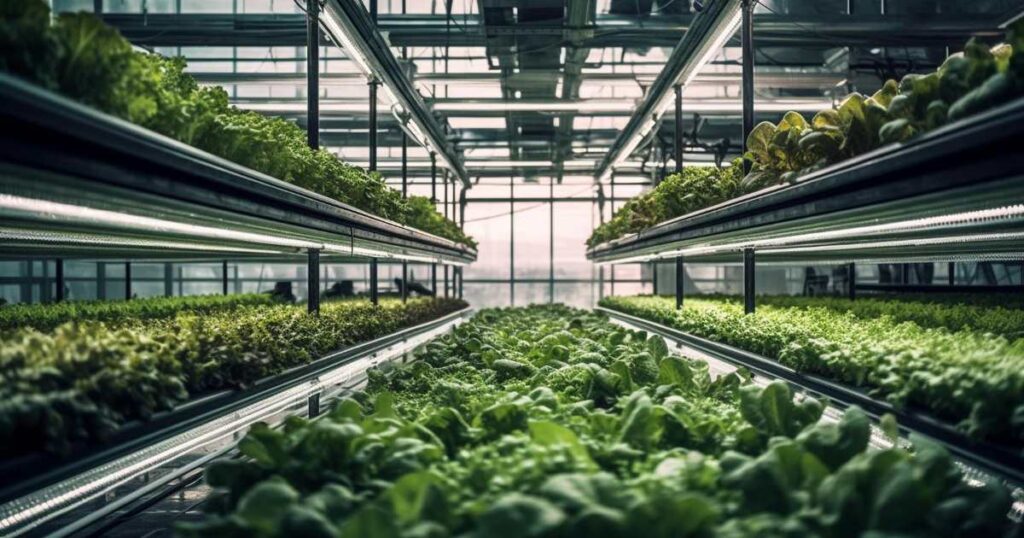In today’s rapidly evolving world, agriculture is no longer limited to traditional farming methods. With the rise of technology, sustainability trends, and changing consumer preferences, innovative agricultural business ideas are opening up exciting opportunities for modern entrepreneurs. Whether you’re a farmer looking to diversify your income or a newcomer passionate about agri-entrepreneurship, there’s a wide range of creative ventures you can explore. In this article, we’ll explore some innovative agricultural business ideas to inspire your next big move in the green economy.
Table of Contents
Innovative Agricultural Business Ideas
1. Organic Farming

Organic farming is one of the best business ideas that focuses on growing crops and raising livestock without synthetic fertilizers, pesticides, or genetically modified organisms. It emphasizes natural processes, biodiversity, and soil health, resulting in healthier food and a reduced environmental footprint. As consumer demand for chemical-free, sustainable produce continues to rise, organic farming presents a profitable and eco-friendly opportunity for entrepreneurs.
How to Start Organic Farming
- Research everything like organic farming principles, certification standards, and market trends.
- Select suitable land with minimal prior chemical usage or plan for a transition period.
- Choose crops based on climate, soil type, and local demand.
- Prepare the soil using organic compost, green manure, and natural soil conditioners.
- Source non-GMO, organic-certified seeds.
- Set up natural pest control methods like neem oil, crop rotation, or beneficial insects.
- Implement water conservation techniques like drip irrigation or rainwater harvesting.
- Maintain detailed records of all farming practices for future certification.
- Apply for organic certification through a recognized agency.
- Harvest and handle produce using hygienic, chemical-free processes.
- Continuously monitor soil health, crop performance, and customer feedback for improvement.
How to Sell The Product
- Sell directly to consumers through farm stands or on-site farm markets.
- Supply organic produce to local grocery stores and organic food retailers.
- Partner with restaurants and cafes that prefer organic ingredients.
- Participate in farmers’ markets and organic trade fairs for direct sales and exposure.
- List products on organic e-commerce platforms and food delivery apps.
- Launch your own website or social media store to take direct orders.
- Supply to schools, hospitals, or institutions promoting healthy food programs.
- Export certified organic products to international markets, if possible.
2. Seedling and Nursery Business

The Seedling and Nursery Business is another agricultural venture that focuses on producing healthy, high-quality plant seedlings for farmers, home gardeners, and landscaping projects. By specializing in early-stage plant growth, nurseries enable customers to save time and reduce crop failure risk by starting with robust young plants. This business can be highly profitable with relatively low startup costs and offers opportunities for diversification through organic or hybrid varieties.
How to Start a Seedling and Nursery Business
- Research local market demand for vegetable, fruit, flower, or ornamental seedlings.
- Choose a suitable location with access to water, sunlight, and protection from harsh weather.
- Decide on the type of plants and target customer base (farmers, gardeners, landscapers, etc.)
- Set up infrastructure like shade nets, polyhouse, seed trays, and irrigation systems.
- Source high-quality seeds and growing media like cocopeat or soil mix.
- Monitor temperature, humidity, and moisture regularly for healthy seedling growth.
- Use organic or chemical-free practices to attract eco-conscious buyers.
- Package seedlings in trays or small pots for easy handling and sale.
- Keep records of inventory, sales, and customer feedback.
How to Sell The Product
- Sell directly from your nursery to walk-in customers and local gardeners.
- Supply bulk seedlings to nearby farmers and agricultural cooperatives.
- Partner with garden centers, plant shops, and agricultural input stores.
- Offer seedlings to landscapers, real estate developers, or municipal bodies for beautification projects.
- List your products on online marketplaces and gardening e-commerce platforms.
- Promote and sell through your own website or social media pages.
- Collaborate with schools, colleges, or NGOs for environmental and educational planting programs.
- Attend agricultural exhibitions and trade fairs to network and take bulk orders.
3. Hydroponic Farming

Hydroponic farming is one of the popular agricultural business ideas these days. It involves growing plants without soil, using a nutrient-rich water solution to deliver essential minerals directly to the roots. This method allows for faster plant growth, higher yields, and efficient use of space and water, making it ideal for urban environments, greenhouses, and indoor farming setups. With the increasing demand for fresh, pesticide-free, and locally grown produce, hydroponic farming presents a sustainable and profitable opportunity for modern agri-entrepreneurs.
How to Start Hydroponic Farming
- Research hydroponic farming systems (e.g., NFT, DWC, drip, etc.) and select according to your choice.
- Choose a location with access to electricity, water, and proper ventilation (indoor, rooftop, or greenhouse).
- Decide on the crops to grow based on market demand and growing conditions.
- Set up the hydroponic structure with grow trays, nutrient reservoirs, pumps, and support systems.
- Install grow lights (LEDs) if operating indoors or in low-light conditions.
- Source high-quality, non-GMO seeds and appropriate growing media like cocopeat or perlite.
- Prepare and manage nutrient solutions tailored to specific crop needs (monitor EC and pH regularly).
- Maintain hygiene and water quality to prevent algae, root rot, or nutrient imbalances.
- Harvest crops at peak quality and pack them hygienically for market readiness.
- Obtain any necessary licenses or training to comply with local agricultural regulations.
- Keep detailed records of inputs, yields, and customer feedback to optimize and scale operations.
How to Sell The Product
- Sell directly to consumers through home delivery or farm-to-door services.
- Partner with local grocery stores and organic food shops for regular supply.
- Supply fresh produce to restaurants, hotels, and cafes focused on quality and sustainability.
- List products on e-commerce platforms and food delivery apps for online sales.
- Launch your own website or social media store to take direct orders.
- Join local food cooperatives or organic delivery networks to expand reach.
- Supply to caterers and meal prep companies for consistent, clean produce.
4. Aeroponic Farming

Aeroponic farming is a highly innovative and space-efficient agricultural business idea that involves growing plants in an air or mist environment without the use of soil or traditional growing media. In this system, plant roots are suspended in air and regularly misted with a nutrient-rich solution, allowing for superior oxygenation, faster growth, and minimal water usage. Aeroponics is ideal for urban areas, vertical farms, and controlled indoor environments where space and resources are limited. Aeroponic farming offers entrepreneurs a high-tech, scalable, and eco-friendly opportunity in modern agriculture.
How to Start Aeroponic Farming
- Research aeroponic farming systems and understand how mist-based root feeding works.
- Select a suitable indoor space, greenhouse, or vertical setup with controlled environmental conditions.
- Decide on the suitable crops to grow based on market demand.
- Purchase an aeroponic system with root chambers, mist nozzles, timers, and nutrient reservoirs.
- Install environmental controls such as LED grow lights, ventilation, temperature, and humidity systems.
- Source high-quality seeds and prepare germination trays or starter plugs.
- Mix and maintain nutrient solutions specific to the chosen crops (monitor EC and pH levels regularly).
- Set up an automated misting schedule to deliver nutrients to exposed roots at regular intervals.
- Monitor plant health, root development, and environmental conditions daily.
- Maintain strict hygiene to prevent bacterial or fungal infections in the root zone.
- Harvest crops at peak maturity and package them hygienically.
- Obtain necessary permits or certifications as per local agricultural guidelines.
- Keep detailed records of crop cycles, inputs, and yields for analysis and scaling.
How to Sell The Product
- Sell fresh produce directly to consumers through home delivery or farm visits.
- Partner with premium grocery stores and organic food outlets for regular supply.
- Supply to restaurants, cafes, and hotels looking for high-quality, pesticide-free greens and herbs.
- Sell through your own website or social media platforms with direct ordering options.
- List products on local e-commerce platforms and food delivery apps.
- Collaborate with nutritionists, wellness centers, and gyms to offer curated health products.
- Supply to caterers, event planners, and meal-prep services that require clean, premium ingredients.
- Create value-added products like herb mixes, salad kits, or smoothie greens for retail sale.
5. Aquaponics Farming

Aquaponics farming is another highly innovative and sustainable agricultural business idea that combines aquaculture (raising fish) and hydroponics (growing plants without soil) in a single, symbiotic system. In aquaponics, nutrient-rich water from fish tanks is used to nourish plants, which in turn purify the water and return it to the fish habitat. This closed-loop method drastically reduces water usage, eliminates the need for chemical fertilizers, and produces both fish and vegetables simultaneously. Aquaponics offers entrepreneurs a profitable and environmentally responsible farming solution suitable for both urban and rural setups.
How to Start Aquaponics Farming
- Research aquaponics systems and understand the balance between fish and plant care.
- Choose a suitable location with access to electricity, water, and space for tanks and grow beds.
- Decide on the fish species (e.g., tilapia, trout, catfish) and plants (e.g., leafy greens, herbs, tomatoes).
- Set up fish tanks, grow beds, and a filtration system to support water circulation.
- Install a water pump and piping system to circulate water between the fish tank and plant grow beds.
- Source healthy fish stock and plant seedlings or seeds for early growth.
- Set up the environment (temperature, water quality, light) to ensure optimal conditions for both fish and plants.
- Monitor water parameters (pH, ammonia, nitrates) regularly to maintain system balance.
- Develop a feeding and maintenance schedule for fish, ensuring they are healthy and producing enough waste for plant nourishment.
- Harvest fish and plants when they reach the desired maturity and ensure hygienic processing.
- Keep detailed records of system performance, plant growth, fish health, and yields to optimize operations.
How to Sell The Product
- Sell fresh fish directly to consumers through farm-to-table services or local deliveries.
- Supply leafy greens, herbs, and vegetables to local grocery stores and organic food retailers.
- Partner with restaurants, cafes, and hotels that prioritize fresh, sustainable, and local produce.
- List products on local e-commerce platforms and health food delivery apps.
- Create a website or social media pages for direct-to-consumer sales.
- Collaborate with wellness centers, gyms, and health food stores to market fresh, eco-friendly products.
- Sell to meal prep companies, catering services, or cloud kitchens requiring fresh ingredients.
- Offer farm tours and workshops, selling produce as part of the experience.
6. Vertical Farming

Vertical farming is a business idea that involves growing crops in stacked layers or vertically inclined surfaces, often within controlled indoor environments such as containers or warehouses. This method uses advanced technologies like hydroponics, aeroponics, and LED lighting to maximize space and optimize plant growth year-round, regardless of weather conditions. It’s especially ideal for urban areas with limited land availability, allowing entrepreneurs to produce fresh vegetables and herbs close to consumers. With the rising demand for sustainable food, vertical farming offers high yield potential and scalability, making it a smart and innovative venture.
How to Start Vertical Farming
- Research vertical farming techniques (hydroponics, aeroponics, and aquaponics) and choose the most suitable one.
- Identify a suitable location (indoor space, warehouse, or rooftop) with access to electricity and water.
- Decide on the crops to grow based on market demand (leafy greens, herbs, microgreens, etc.)
- Design your vertical farming structure using shelves, racks, or tower systems to optimize space.
- Set up a controlled environment with LED grow lights, ventilation, temperature, and humidity control systems.
- Source high-quality seeds, nutrient solutions, and growing media.
- Test and adjust pH, EC levels, and lighting to ensure optimal growth conditions.
- Develop a crop cycle and planting schedule to maintain consistent harvests.
- Maintain records of plant performance, yield, and sales to optimize and scale operations.
How to Sell The Product
- Sell fresh produce directly to local consumers through farm-gate sales or home delivery.
- Partner with grocery stores, organic shops, and supermarkets for regular supply.
- Supply fresh herbs and greens to restaurants, cafes, and hotels focused on quality and freshness.
- Launch an online store or use e-commerce platforms to reach urban customers.
- Collaborate with health food stores and wellness centers to promote fresh, clean produce.
- Supply to caterers, meal prep companies, or cloud kitchens for consistent bulk orders.
- Offer educational farm tours and workshops, selling produce as part of the experience.
7. Agritourism

Agritourism is an innovative agricultural business idea that blends farming with tourism, offering visitors the chance to experience rural life, agricultural practices, and nature-based activities firsthand. From farm stays and guided tours to pick-your-own produce, workshops, and petting zoos, agritourism creates unique, educational, and recreational experiences for families, students, and eco-tourists. This model not only diversifies farm income but also promotes local food, culture, and sustainable farming practices. With growing interest in rural escapes and farm-to-table lifestyles, agritourism presents a profitable and engaging opportunity for farmers to connect with the public and add value to their land.
How to Start Agritourism
- Research the concept of agritourism and understand legal requirements.
- Identify your farm’s unique attractions (e.g., animal husbandry, organic farming, orchards, traditional tools).
- Choose the type of agritourism experience to offer (farm stays, tours, activities, events, workshops).
- Develop a business plan including target audience, services, pricing, and safety protocols.
- Upgrade farm infrastructure as needed for visitors (clean restrooms, seating, signage, parking).
- Set up accommodation if offering farm stays (rooms, cottages, tents, or dormitories).
- Prepare educational and interactive experiences (milking, harvesting, cooking, feeding animals, etc.).
- Train staff or family members in hospitality, customer service, and safety management.
- Get necessary licenses, insurance, and approvals for tourism operations.
- Promote through local tourism boards, websites, social media, and travel platforms.
8. Mushroom Farming

Mushroom farming is a profitable agricultural business idea that involves cultivating edible fungi such as oyster, button, or shiitake mushrooms in controlled environments. It requires minimal space, low startup investment, and can be practiced indoors using agricultural waste like straw, sawdust, or coffee grounds as growing media. Due to their rich nutritional value and increasing demand in culinary and medicinal markets, mushrooms offer high market potential. With short growing cycles and the ability to farm year-round, mushroom cultivation presents a sustainable and scalable opportunity for entrepreneurs seeking a modern, high-yield agribusiness.
How to Start Mushroom Farming
- Research different types of edible mushrooms (e.g., oyster, button, shiitake) and choose one based on climate and market demand.
- Select a suitable location with a controlled environment (low light, high humidity, and proper ventilation).
- Set up a growing area using shelves, bags, or trays, depending on the mushroom variety and scale.
- Source quality mushroom spawn (seeds) from a certified supplier.
- Prepare the growing substrate using materials like straw, sawdust, or composted manure.
- Inoculate the substrate with mushroom spawn and fill it into grow bags or containers.
- Maintain ideal conditions for incubation (darkness, temperature, and humidity) until mycelium spreads.
- Monitor daily for contamination and maintain cleanliness throughout the process.
- Harvest mushrooms at the right stage and handle them carefully to preserve freshness.
- Keep records of yield, input costs, and sales to refine operations and plan for expansion.
How to Sell The Product
- Sell fresh mushrooms directly to consumers through local farmers’ markets and roadside stands.
- Partner with grocery stores, organic shops, and supermarkets for regular supply.
- Supply to restaurants, cafes, and hotels that use mushrooms in various dishes.
- List fresh or dried mushrooms on e-commerce platforms and local food delivery apps.
- Launch your own website or social media pages to take direct orders and promote your brand.
- Create and sell value-added products like dried mushrooms, mushroom powder, or mushroom pickles.
- Supply in bulk to caterers, cloud kitchens, and food processors.
- Organize farm tours, workshops, or mushroom-growing kits as an added source of income and product exposure.
9. Beekeeping

Beekeeping, also known as apiculture, is an environmentally beneficial agricultural business idea focused on raising honeybees to produce honey, beeswax, royal jelly, and other valuable hive products. It requires relatively low investment and space, making it accessible even in rural and semi-urban areas. Beyond generating income, beekeeping plays a vital role in enhancing pollination and improving crop yields, thereby supporting broader agricultural productivity. With rising consumer demand for natural and organic products, as well as growing awareness of pollinator importance, beekeeping offers a sustainable, eco-friendly, and profitable venture for modern agri-entrepreneurs.
How to Start Beekeeping
- Learn the basics of beekeeping through books, online courses, or local workshops.
- Choose a suitable location with access to flowering plants and minimal human disturbance.
- Select the type of bees to keep (commonly Apis mellifera or Apis cerana) based on climate and purpose.
- Purchase essential beekeeping equipment such as bee boxes (hives), protective clothing, a smoker, and hive tools.
- Acquire healthy bee colonies or nucleus hives from a trusted breeder or local apiary.
- Set up beehives on stands in a shaded, well-ventilated area with access to water.
- Monitor the hives regularly for signs of disease, queen activity, and honey production.
- Harvest honey during the appropriate season using a honey extractor and maintain hygiene.
- Comply with local regulations, if any, related to honey production and sales.
- Maintain records of hive health, honey yield, and expenses for efficient management and scaling.
How to Sell The Product
- Sell raw or processed honey directly to local consumers through farmers’ markets and roadside stands.
- Partner with grocery stores, organic shops, and supermarkets for regular supply.
- Launch your own brand and sell honey through a website or social media platforms.
- List your products on e-commerce sites and local food delivery apps.
- Supply honey in bulk to restaurants, cafes, and bakeries that use it as a natural sweetener.
- Sell value-added products like flavored honey, beeswax candles, lip balms, or soaps.
- Collaborate with health stores and ayurvedic shops that focus on natural and medicinal products.
- Provide wholesale supply to beauty, wellness, or food processing companies.
- Educate and engage consumers through farm tours, honey tasting events, or beekeeping workshops.
10. Organic Compost Production

Organic compost production is a sustainable business idea that involves converting biodegradable waste like crop residues, kitchen scraps, and animal manure into nutrient-rich compost. This eco-friendly process not only reduces environmental pollution but also creates a valuable soil amendment that enhances soil health and boosts crop yields. With increasing demand for organic farming inputs and environmentally responsible practices, compost production offers a low-investment, high-impact business opportunity. Entrepreneurs can tap into markets such as small-scale farmers, urban gardeners, plant nurseries, and eco-conscious consumers, making it both profitable and beneficial for sustainable agriculture.
How to Start Organic Compost Production
- Research composting methods (vermicomposting, aerobic, anaerobic) and choose the most suitable one.
- Select a location with proper drainage, shade, and easy access to raw materials and water.
- Collect biodegradable waste like crop residues, vegetable peels, animal manure, and dry leaves.
- Arrange composting bins, pits, or windrows depending on the scale of production.
- Maintain moisture levels by watering the pile as needed.
- Turn or aerate the compost regularly to promote microbial activity and avoid foul odor.
- Allow compost to mature and stabilize until it becomes dark, crumbly, and earthy-smelling.
- Get tested and certified if required for organic compost quality standards.
- Keep records of raw materials, processing time, and yield for quality and scaling.
How to Sell The Product
- Sell directly to local farmers and gardeners through farmers’ markets or farm stands.
- Partner with nurseries, garden centers, and landscaping companies to supply compost in bulk.
- Offer organic compost to urban gardeners, eco-conscious individuals, and community garden projects.
- Set up an online store or use social media platforms to take orders and promote your products.
- Package compost in small, user-friendly bags for retail sale in garden centers or organic shops.
- Provide compost to local schools, universities, or public spaces for use in horticulture projects.
- Create value-added products like compost blends with fertilizers, or soil conditioners for specific plants.
11. Agricultural Drone Services

Agricultural drone service is a popular business idea these days that leverages drone technology to improve farming practices through aerial monitoring, data collection, and precision agriculture. Drones can be used to assess crop health, monitor irrigation systems, apply pesticides or fertilizers with pinpoint accuracy, and even generate high-resolution maps for better field management. With the ability to cover large areas quickly and provide real-time insights, agricultural drones offer significant cost and time savings for farmers. As the demand for more efficient, sustainable, and data-driven farming practices grows, this high-tech solution offers opportunities for entrepreneurs to cater to a modern, tech-savvy farming industry.
How to Start an Agricultural Drone Service
- Research the agricultural drone industry to understand regulations, technology, and market demand.
- Obtain necessary certifications or licenses.
- Ensure compliance with local regulations, including airspace restrictions and insurance requirements.
- Choose the type of drones suitable for agricultural purposes.
- Invest in drones with high-quality cameras, GPS, and sensors for data collection and analysis.
- Learn how to operate drones and understand the various software tools for data processing and analysis.
- Develop a business plan, identifying target markets (e.g., farmers, agronomists, cooperatives) and service offerings (e.g., crop monitoring, aerial spraying, soil analysis).
- Build partnerships with local farms or agricultural organizations to offer pilot services and gain experience.
- Set up a pricing model based on the type of service, field size, and drone usage.
- Promote your services through local agricultural events, online platforms, and social media.
- Provide ongoing maintenance, data analysis, and follow-up services for clients.
12. Agri-Tech Consulting

Agri-Tech consulting is another great business idea that combines agriculture with technology to help farmers and agribusinesses optimize their operations. Consultants in this field provide expert advice on the adoption of cutting-edge technologies such as precision farming, automation, drones, and AI-driven analytics to improve crop yields, reduce costs, and enhance sustainability. With the agriculture industry increasingly relying on smart technologies to meet the challenges of climate change, labor shortages, and resource management, agri-tech consulting offers an opportunity to support farmers in transitioning to more efficient, data-driven, and sustainable practices, making it a profitable and impactful business.
How to Start Agri-Tech Consulting
- Research the agri-tech industry to understand the latest technologies and market trends.
- Gain knowledge and expertise in agricultural technologies such as precision farming, drones, AI, and automation.
- Obtain relevant certifications or training in agriculture, technology, or consulting.
- Develop a business plan outlining your target market (e.g., farmers, agribusinesses, cooperatives) and service offerings (e.g., technology integration, data analysis, farm optimization).
- Build a network of agricultural professionals, tech providers, and potential clients.
- Create a portfolio showcasing successful case studies or pilot projects to demonstrate your expertise.
- Develop partnerships with technology providers and equipment manufacturers to stay up to date on the latest innovations.
- Establish an online presence (website, social media) to promote your services and attract clients.
- Attend agricultural trade shows, conferences, and local events to build your reputation and connect with potential clients.
- Continuously update your knowledge and stay informed about emerging technologies and trends in the agricultural sector.
Conclusion
In conclusion, the agricultural landscape is evolving rapidly, offering a wealth of innovative business opportunities for forward-thinking entrepreneurs. The 12 ideas discussed highlight how agriculture today is blending sustainability, technology, and creativity. Whether you’re starting small or aiming to scale big, these ventures not only promise profitability but also contribute to food security, environmental health, and rural development. By choosing the right idea based on your interests, resources, and market demand, you can build a successful agribusiness that meets the needs of the future.









